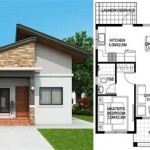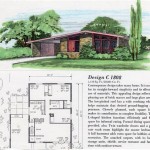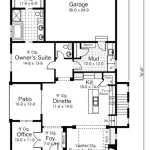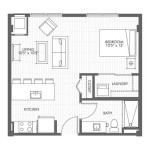How to Draw 3D Planets: A Comprehensive Guide
Creating the illusion of three-dimensionality in art, particularly when depicting celestial bodies like planets, involves understanding and applying fundamental principles of light, shadow, and perspective. This article outlines the steps and techniques necessary to draw planets that appear realistically spherical and inhabit a three-dimensional space on a two-dimensional surface.
Embarking on this artistic endeavor requires a foundation in basic drawing skills, including line control, shading techniques, and an understanding of geometric forms. The creation of a believable 3D planet hinges on the skillful manipulation of these elements to convey depth and volume.
I. Establishing the Basic Form: The Circle as a Sphere
The initial step in drawing a 3D planet involves creating a perfect circle. While freehand circles are acceptable for initial sketches, utilizing a compass or a circular template will ensure a more accurate representation of a sphere. The accuracy of this initial form is crucial, as any imperfections will be amplified as details are added, hindering the illusion of three-dimensionality.
Once the circle is established, it is advisable to lightly sketch a cross within the circle, dividing it into quadrants. These lines serve as guides for positioning features, such as craters, continents, or cloud formations, ensuring that they align correctly with the planet's curvature. The intersection of these lines marks the center of the sphere, a critical reference point for symmetry and perspective.
Consider the orientation and tilt of the planet at this stage. Slightly tilting the vertical axis of the cross alters the perceived view of the planet, influencing how features are distributed across its surface. This element of artistic license can contribute to a more dynamic and engaging composition.
II. Light and Shadow: Sculpting Volume
The application of light and shadow is paramount in transforming a flat circle into a convincing sphere. To achieve this, it is necessary to establish a light source. The position of the light source dictates the placement of highlights, shadows, and the terminator – the line that separates the illuminated portion of the planet from the shadowed region. The terminator should not be a sharp line but rather a gradual transition, reflecting the curvature of the sphere and the diffusion of light.
The lightest area, the highlight, typically occurs on the side of the planet closest to the light source. Conversely, the darkest area, the core shadow, appears on the opposite side, furthest from the light. A reflected light area, a subtle brightening within the core shadow, can be added to enhance realism. This reflected light is caused by light bouncing off surrounding objects or the atmosphere and striking the shadowed area.
A gradient of tones is then applied between the highlight and the core shadow, creating a smooth transition from light to dark. This gradient is crucial for conveying the curvature of the planet. Techniques such as hatching, cross-hatching, stippling, or blending can be employed to achieve this effect. The choice of technique depends on the desired aesthetic and the medium being used.
The intensity of the shadows should gradually decrease as they move away from the terminator. This subtle variation in tone reinforces the illusion of depth and prevents the drawing from appearing flat. Consideration should also be given to the ambient light influencing the overall tone of the shadowed area.
III. Surface Detail and Atmospheric Effects
Adding surface details, such as craters, mountain ranges, or cloud patterns, enhances the realism and believability of the planet. These details should conform to the curvature of the sphere and interact realistically with the light and shadow. Craters, for example, should have shadows on the side opposite the light source, and highlights on the side facing the light. The size and intensity of these highlights and shadows should vary depending on the depth and scale of the crater.
Atmospheric effects, such as haze or cloud layers, can be added to create a sense of depth and distance. These effects are typically rendered using subtle variations in tone and texture. A thin layer of haze along the edges of the planet can soften the outline and suggest the presence of an atmosphere. Similarly, cloud formations can be rendered using a combination of light and shadow, creating a sense of volume and depth. The cloud patterns should follow the curvature of the sphere and should be less defined as they approach the horizon.
The use of texture can also contribute to the realism of the planet. For rocky planets, textures can be added to simulate the roughness of the surface. For gas giants, swirling patterns and subtle color variations can be used to depict atmospheric turbulence. The specific textures and patterns used will depend on the type of planet being depicted.
Color plays a significant role in conveying the visual characteristics of a planet. Depending on the composition and atmospheric properties, the overall color scheme can drastically alter the perceived environment of the body. For example, a reddish hue overlaid with dust texture might indicate a hot, barren planet, while a blue and white swirl of color might communicate a lush, water-rich environment.
Consider the scale and proportion of the features added. Small details, such as individual rocks or small cloud formations, can enhance realism, but they should be appropriately sized relative to the overall size of the planet. Overly large or disproportionate features can detract from the illusion of three-dimensionality.
IV. Adding Depth and Perspective
To further enhance the illusion of depth, consider adding a background. A starfield or a nebula can provide context and scale to the planet. The background should be darker than the planet, creating contrast and emphasizing its form. The stars in the background should appear smaller and more distant than the planet, reinforcing the sense of depth.
The use of atmospheric perspective can also be employed to enhance depth. Objects in the distance appear lighter and less detailed than objects in the foreground. This effect can be simulated by gradually lightening the tones of the background as they recede into the distance. Softening the edges of features in the background can also contribute to the illusion of depth.
Planetary rings can offer a strong visual element and a challenge to execute. The rings are elliptical in shape when viewed in perspective and must maintain a consistent thickness. Their shadow is cast upon the planet's surface, further emphasizing the light direction and lending credibility to the overall scene. Rings add geometric complexity and a strong element of visual interest.
Experiment with different perspectives and angles to create more dynamic and engaging compositions. Viewing the planet from a low angle, for example, can emphasize its size and scale. Viewing the planet from above can provide a more comprehensive view of its surface features. The choice of perspective will depend on the desired aesthetic and the message the artist wishes to convey.
When drawing multiple planets, it is imperative to consider their relative sizes and distances. Planets further away should appear smaller and fainter than planets closer to the viewer. Overlapping planets can also create a sense of depth and spatial relationships.
Finally, the overall composition of the drawing should be carefully considered. The placement of the planet within the frame, the balance of light and dark areas, and the use of leading lines can all contribute to a more visually appealing and engaging artwork. Experimentation and iterative refinement are key to mastering the art of drawing 3D planets.
Iterative practice is the cornerstone of developing proficiency in this art form. By consistently applying these techniques and experimenting with different styles and approaches, one can steadily refine their skills and create increasingly realistic and compelling depictions of planetary bodies. Embracing feedback and continuously seeking improvement are essential components of the learning process.

3d Planet On My Paper Draw Illusion

How To Draw Planets In Our Solar System I Make Drawing

How To Draw The Solar System Sketching Cosmic Creations

Solar System Drawing In Black Chart Paper How To Draw Step By Easily

How To Draw The Solar System Step By

Solar System Drawing Step By Tutorial

How To Make Solar System Drawing In Chart Paper 3d School Project

Easy 3d Drawing How To Draw A Solar System Cool

3 Ways To Draw The Solar System Tech Edvocate

Solar System Drawing How To Draw Planets
Related Posts








